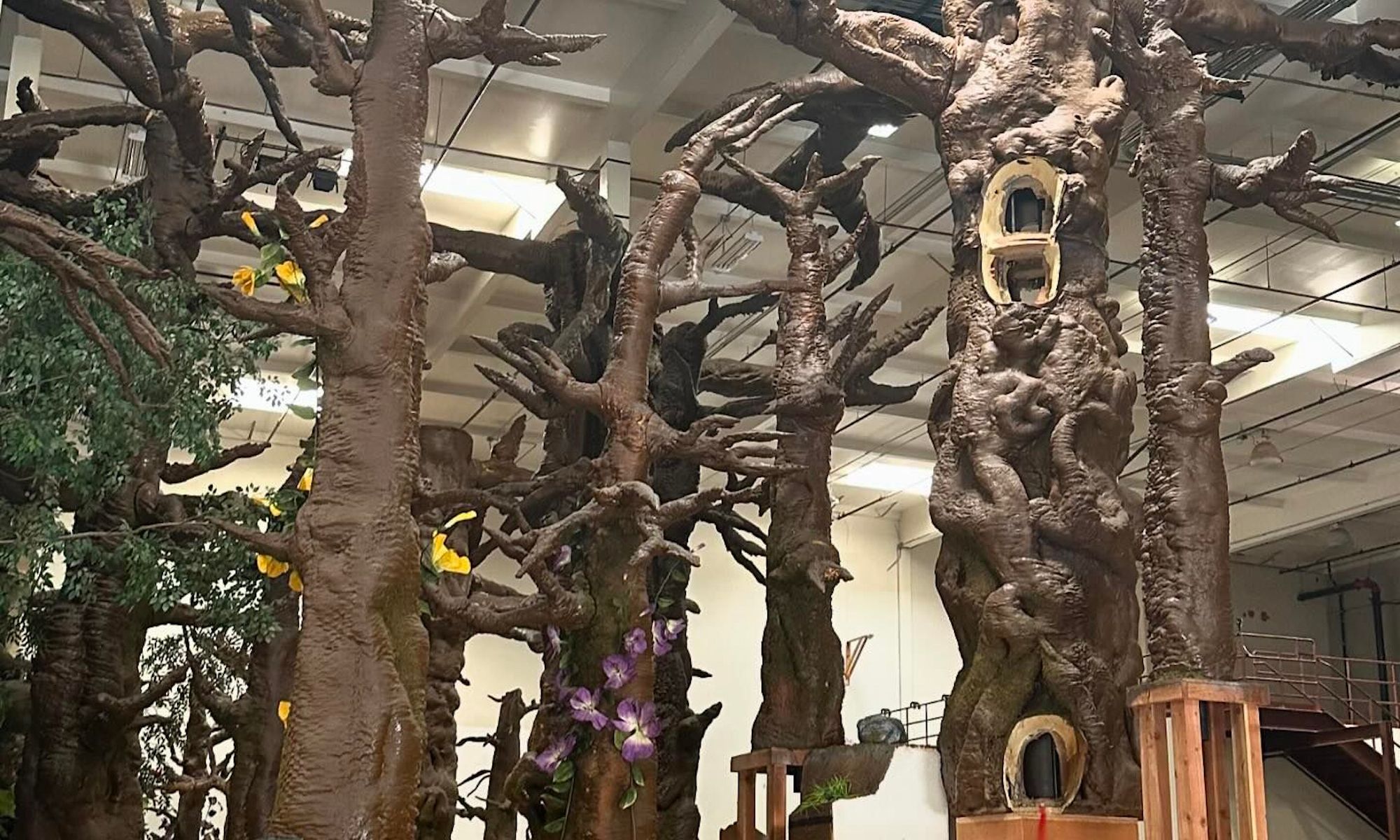Parts of Paul McCarthy's 2013 installation WS White Snow being disassembled for disposal Photo courtesy McCarthy Studios, via Instagram
Piece by piece, the Los Angeles artist Paul McCarthy has been boxing up and throwing out the fake foliage, Styrofoam trees and other parts of his around 17,000 sq. ft Disney-inspired installation, WS White Snow (2013). The risqué psychodrama, consisting of a multi-channel video and a forest filled with sinister surprises, was a hit when it appeared at New York’s Park Avenue Armory in 2013. McCarthy himself believed it was “one of his greatest works”, according to his son and studio director, Damon McCarthy.
But around 2019, the artist’s market fell into a slump and he couldn’t afford to store the work in his warehouse anymore. So early last year, Paul invited curators and directors from Los Angeles museums including the Getty, the Museum of Contemporary Art, the Hammer Museum and the Los Angeles County Museum of Art, hoping one might acquire the installation, or know someone else who would.
“It was a brainstorming session over lunch to see if we could come up with any ideas to save it,” says Connie Butler, who at the time was chief curator at the Hammer. “It’s incredible and has extraordinary significance, both as a monument in the history of installation art and in the history of contemporary art.”
“We were ready to make a deal with anybody to keep the piece alive,” Damon says. They offered to donate it to museums. They looked for a patron to buy the $2m warehouse and keep it there. For a moment there was talk with a couple institutions in South America. But ultimately, there were no takers. “So we have to say goodbye to something that we love.”
“It was poignant,” Butler says of the meeting, “because I think we all kind of knew the inevitability of it not being able to be sustained.”
Parts of Paul McCarthy's 2013 installation WS White Snow being disassembled for disposal Photo courtesy McCarthy Studios, via Instagram
Just storing the installation in boxes alone requires up to 4,000 sq. ft of space; to install it, a building needs ceilings at least 30ft tall. “The particular combination of the huge object presence of it and the conservation involved and the technology, but also the content”—the work depicts orgies, battered bodies and a variety of spattered fluids—“makes it particularly tough and I guess, in the end, kind of impossible to find the right home,” Butler says.
The work has a particular emotional resonance for McCarthy because it includes an exact replica of his family home, with identical wallpaper, tiling—even the chipped bathroom mirror. “For that to go for him,” Damon says, “definitely hurt.” Then, when Damon told his father that he had found a buyer for the warehouse—without the art inside—“that was another level of hurt because it's an end of an era.”
So far, the artist and his studio have filled three 20ft shipping containers with the installation’s broken-down pieces and are talking logistics with Styrofoam recycling plants. It remains to be seen whether they will be able to preserve the house or any of the individual sculptures. Otherwise, Damon says, “all those things will just get sold back into Hollywood, where we bought them.”
“I would rather it goes somewhere and rot into itself than throw it away,” he adds. “I want to put it in the desert and just see how long it survives.”

